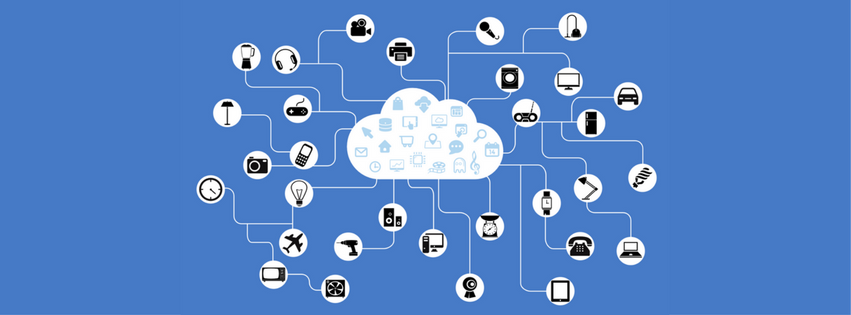 There’s no doubt that the Internet of Things is developing swiftly, and that it can be used in many creative and innovative ways. Experts forecast between 20 and 100 billion connected devices will be on the market by 2020, with market expenditure increasingly accordingly. But what does the IoT mean for Higher Ed? Here are five ways that the Internet of Things can be used on your campus to engage, interact, and connect with your users.
There’s no doubt that the Internet of Things is developing swiftly, and that it can be used in many creative and innovative ways. Experts forecast between 20 and 100 billion connected devices will be on the market by 2020, with market expenditure increasingly accordingly. But what does the IoT mean for Higher Ed? Here are five ways that the Internet of Things can be used on your campus to engage, interact, and connect with your users.
1: Labeling and Finding
The truth is that most university campuses are already wired for IoT. Campus-wide wifi along with a proliferation of personal devices that students and faculty already own make for the perfect hardware basis for IoT. Transferring these capabilities to connected facilities is often a matter of creative application. For instance: what if your campus’ buildings were able to transmit interactive map data to a student finding their way around for the first time? What if your on-campus sculpture garden had virtual plaques that could send information and metadata to passersby? What if your biology department’s herb garden was IoT enabled to transmit plant data to inquiring minds with the click of a button? Anything that someone might be looking for on campus could be easily labeled and put online in order to facilitate ease of finding for any user with a smartphone.
2: Booking and Availability
Physical space on a university campus is often hotly contested territory. With so many classes, clubs, activities, social hours, meetings, and general comings and goings of people, the occupancy of any space is an ever-flowing river of variables. The Internet of Things could help your users navigate their space needs with ease; reporting on if a current room is in use, how long it has been occupied, and perhaps even when the current occupants plan on vacating the premises. This could be integrated alongside your college’s existing room reservation service to help provide students vital insight into whether they can find a space somewhere, and how long they might expect to be able to occupy that space.
3: Preparation
With so many variables to consider when rooms are or are not in use, room preparation can be high on the minds of faculty and administrators. Will the lights be on? Will the room be the correct temperature for occupancy? Will the computers and available technology be ready to go? Will the correct seating arrangement/number of desks be in place? All of these variables can be tracked, and most of them can be preset, using the Internet of Things. For example, the Pacific Lutheran University in Tacoma, Washington uses the IoT to monitor their HVAC systems and card readers, allowing them to track when people enter and leave specific buildings and adjust their systems accordingly. Implementing such practices on your university campus will not only save your users time but also needless worry about the state of their space before and during university events and classes.
4: Intervention
As student patterns are tracked, deviations from those patterns can signal recognizable trouble for students.
As FitBit and other personal wearables become better at tracking various health markers, these markers can be put to use tracking individual patterns in the student body. Student success, health, and well-being should be at the forefront of the university’s mind, and consequently, this data can work to help ensure it. As student patterns are tracked, deviations from those patterns can signal recognizable trouble for students. The University of Southern California is currently researching the impact that analyzing IoT-gathered data can have on student performance, but the IoT can be used to prevent more than just academic difficulties. Lack of sleep coupled with a lack of activity, for instance, might indicate a mental or physical health crisis that the university can help with. Getting in front of such crises can be a huge step forward in student care, enabled by technology and the Internet of Things. One thing to keep in mind is the privacy concerns such use might raise; as universities implement systems that integrate wearables, they will encounter this hurdle and have to implement policies to address it. Those policies must be custom-built to each use case and should be put to rigorous review as wearables become part of the university’s Internet of Things.
5: Research
Laboratories are often required to be completely controlled spaces with considerations made for climate, light, and sometimes even biometric data inside the lab. The Internet of Things makes monitoring and administrating such conditions an easy prospect, and can handle the task remotely often without human intervention. The right IoT setup in your university labs might make a huge difference to researchers, and directly impact the quality of work they produce.
The capabilities of the Internet of Things are nearly infinite and almost only limited by creative application. The future is coming, and it’s time for Higher Ed to get on board with the incredible possibilities that the IoT can lend.
Avoid costly mistakes and wasted time – talk to an impartial peer in Higher Ed!
There is nothing like speaking with a peer who has implemented the same product – send us a request.
You can also provide general feedback, inquire about additional free resources, submit a topic you’d like us to cover, tell us about a feature you’d like to see, or request the best staff for your project.